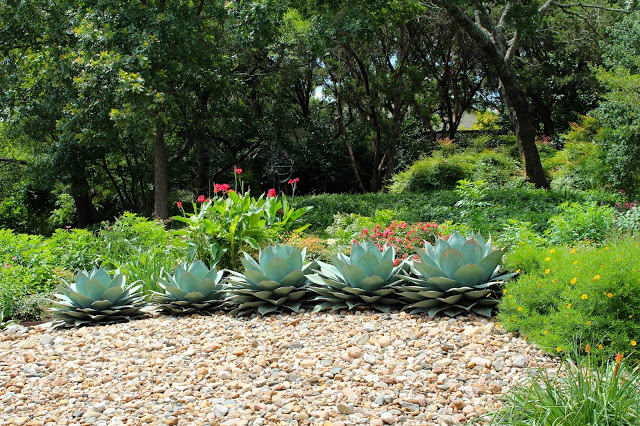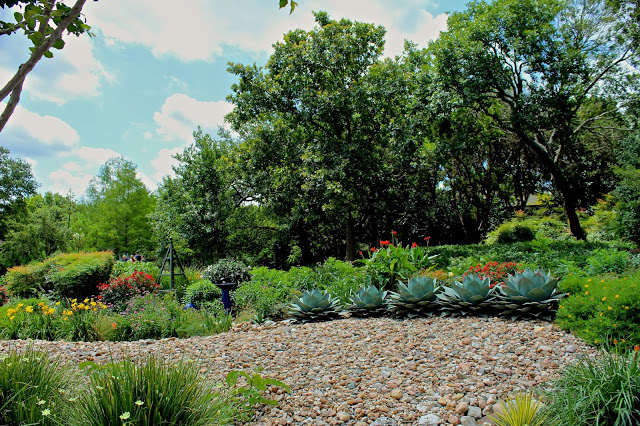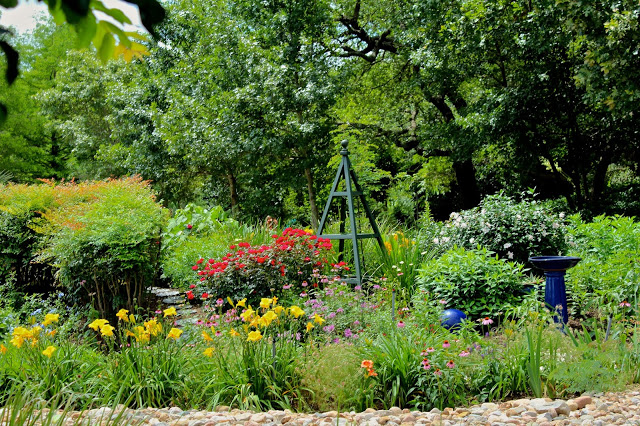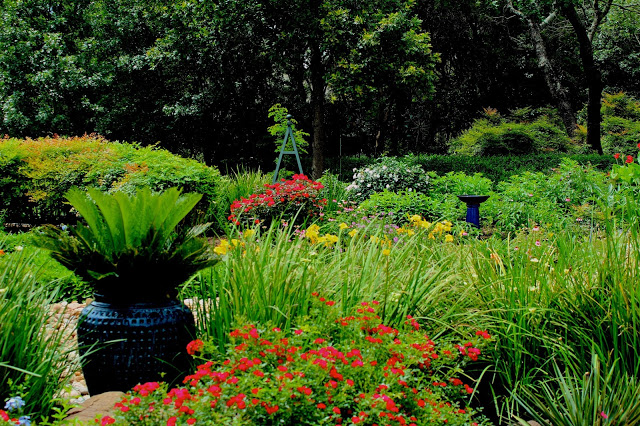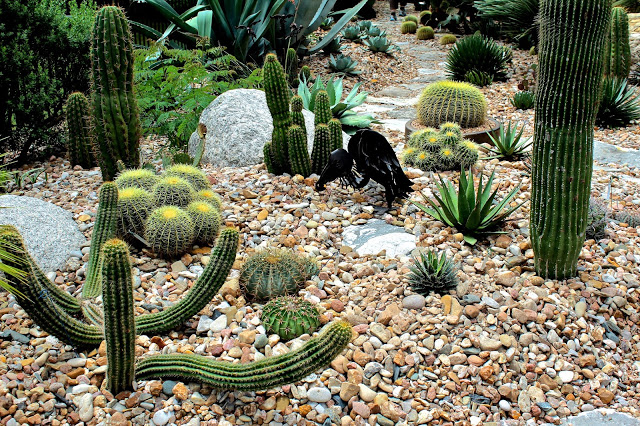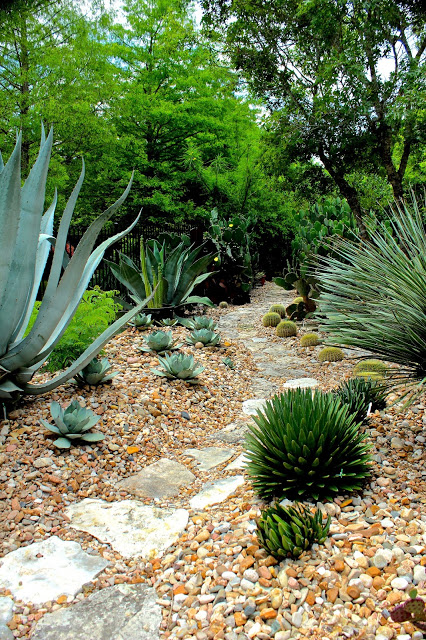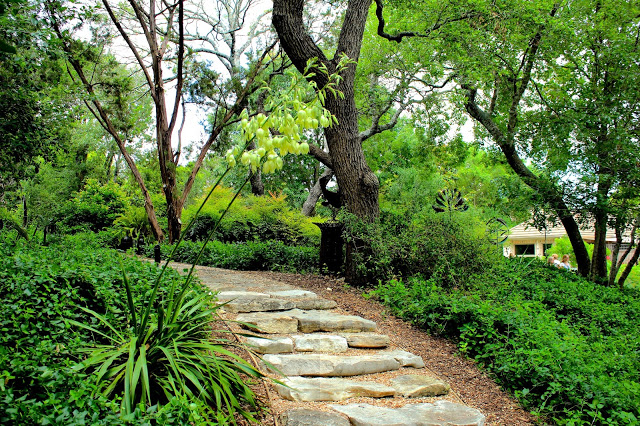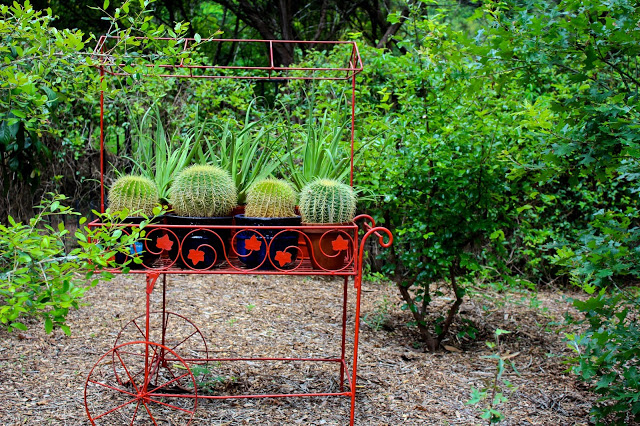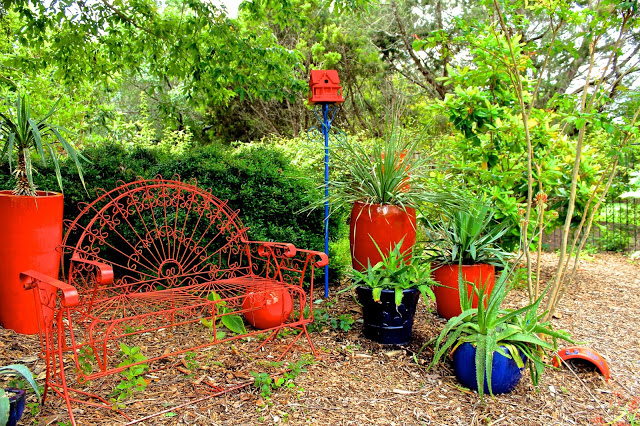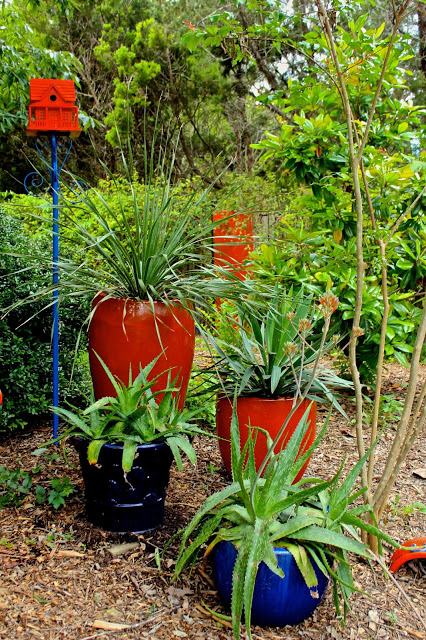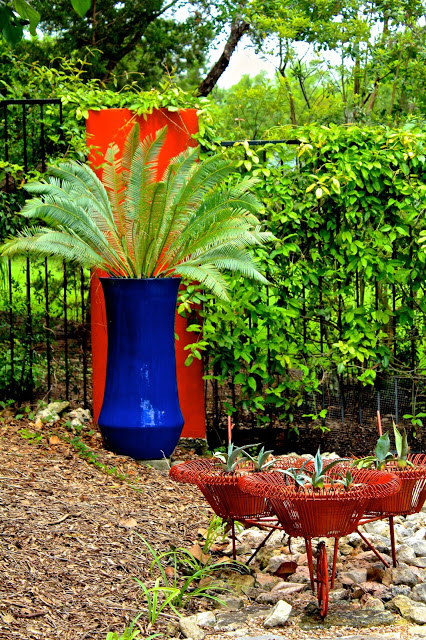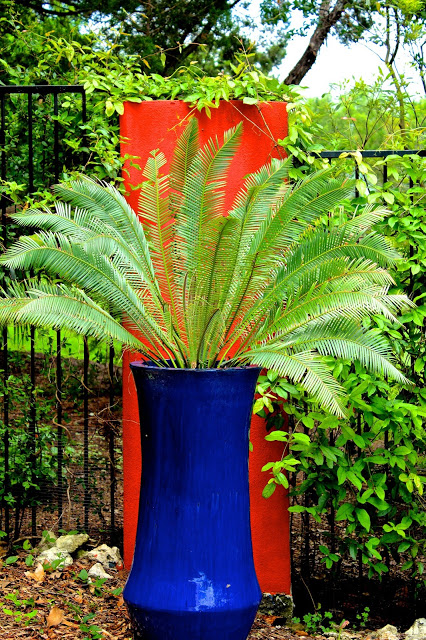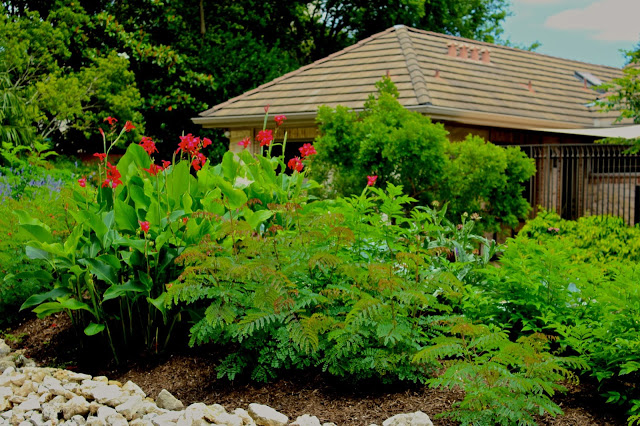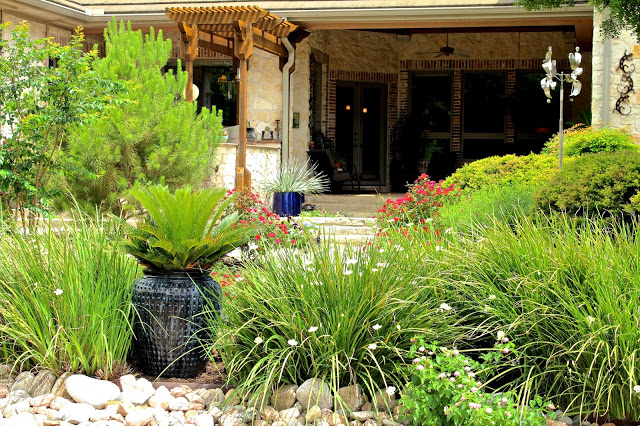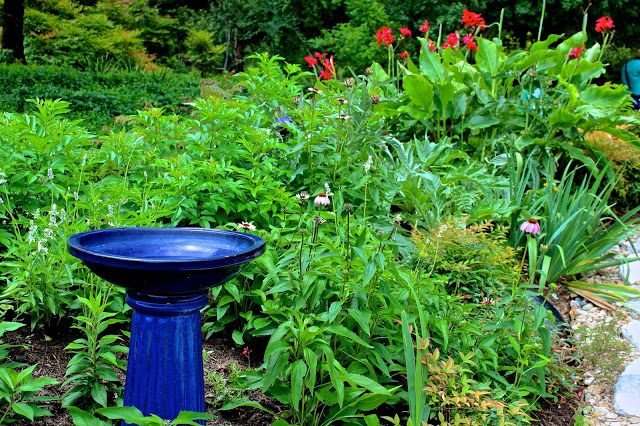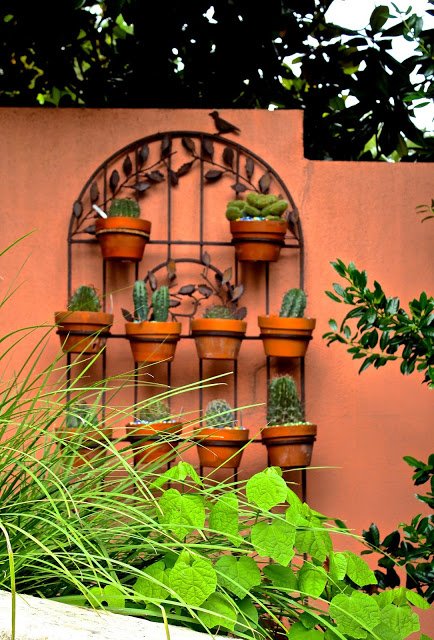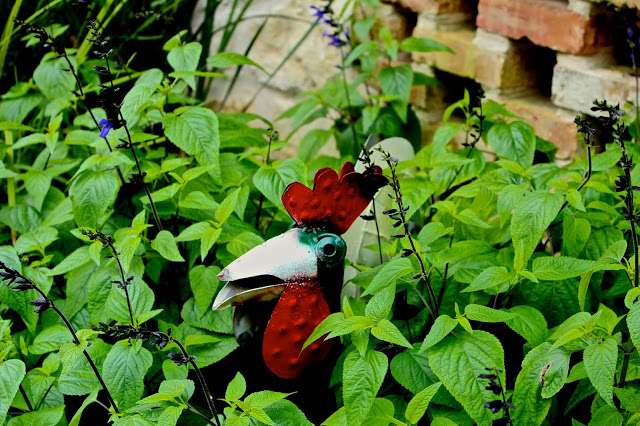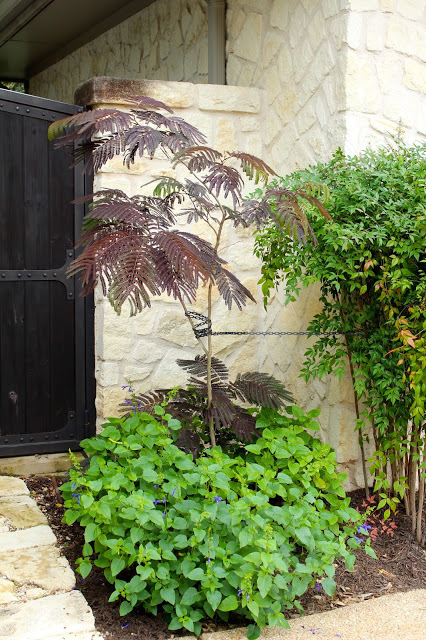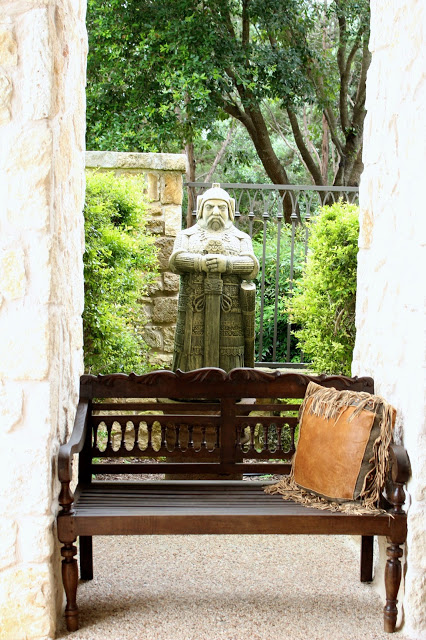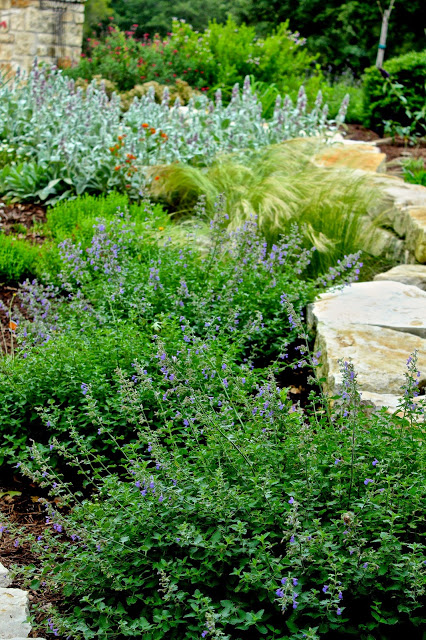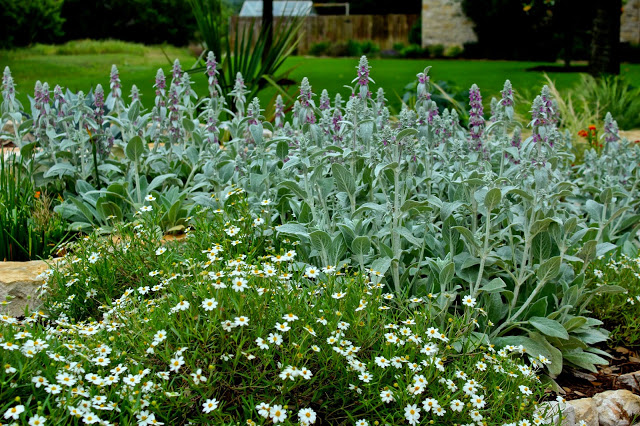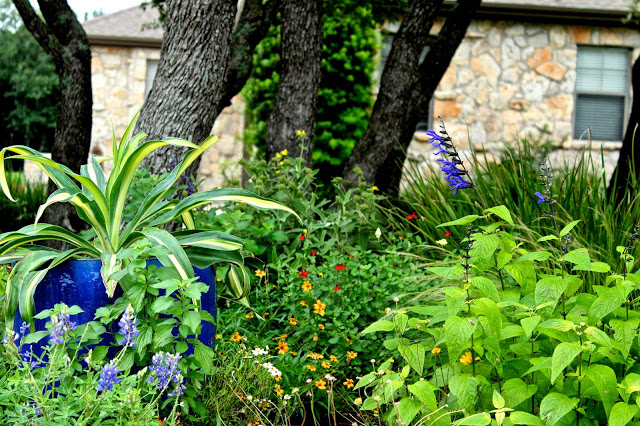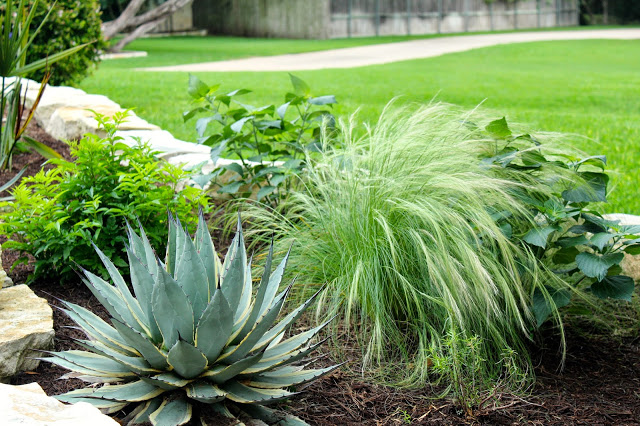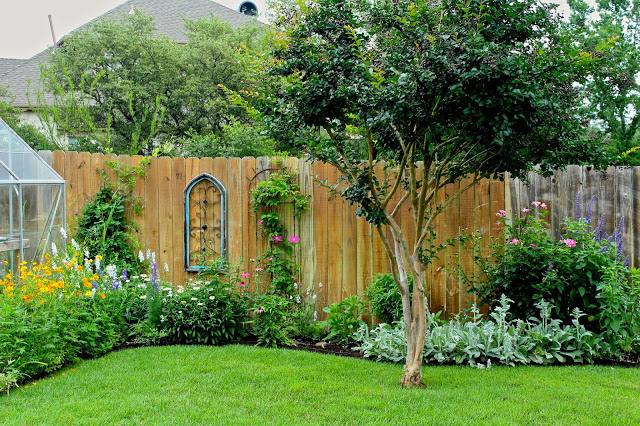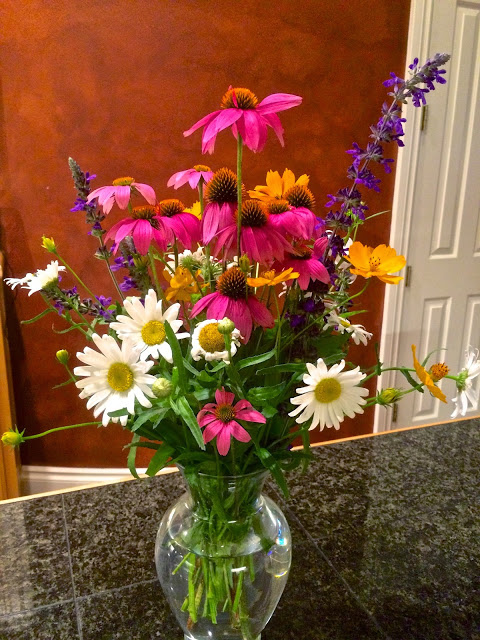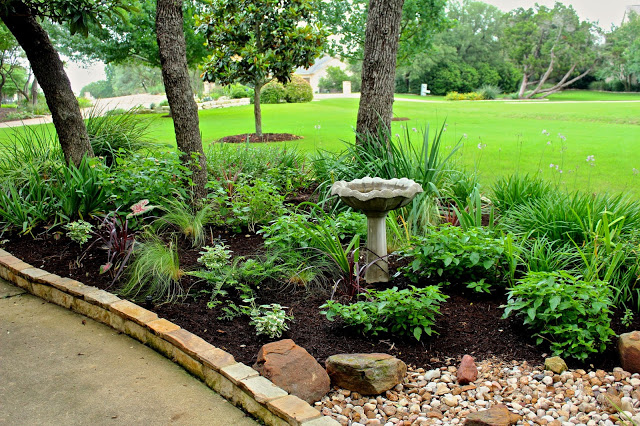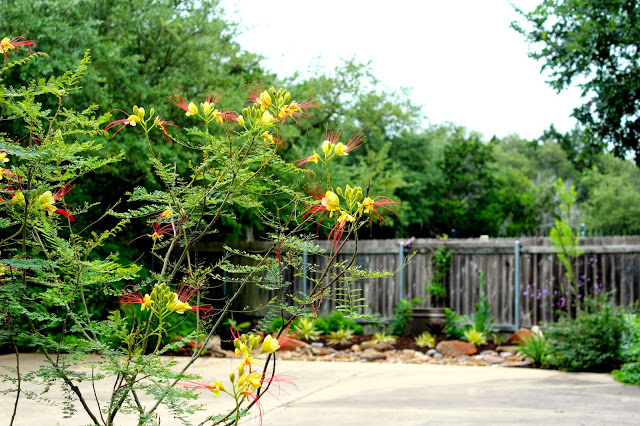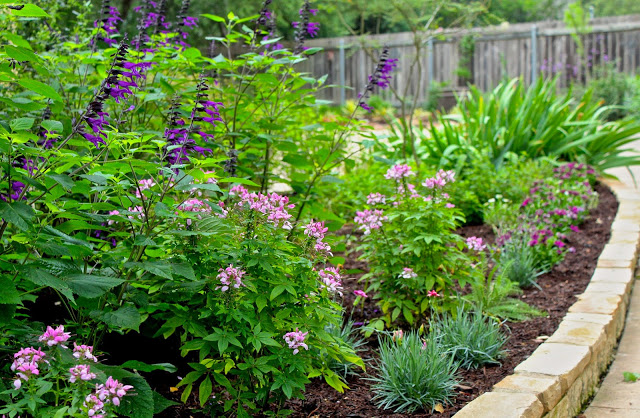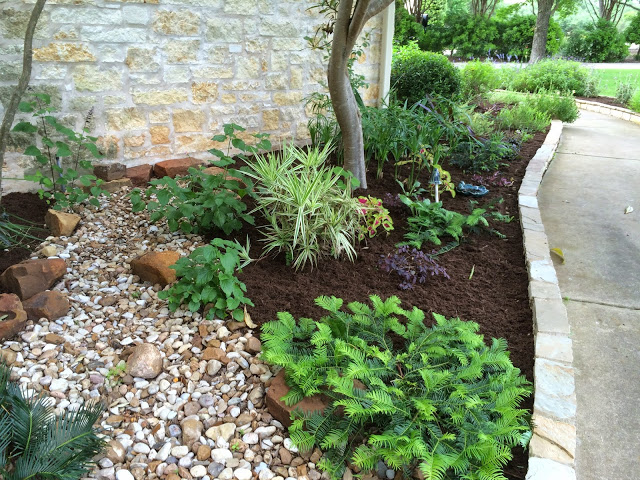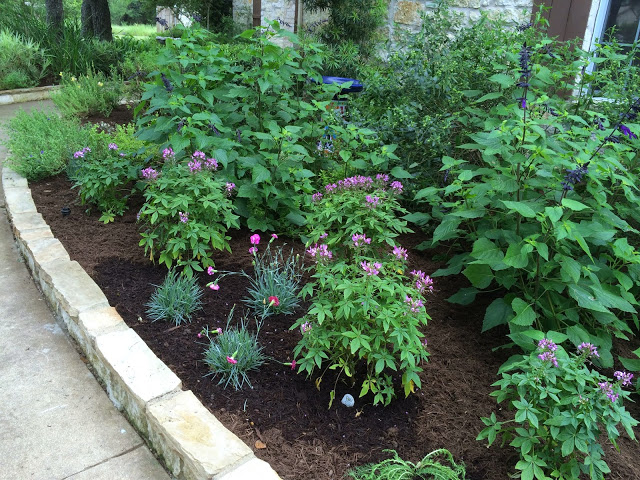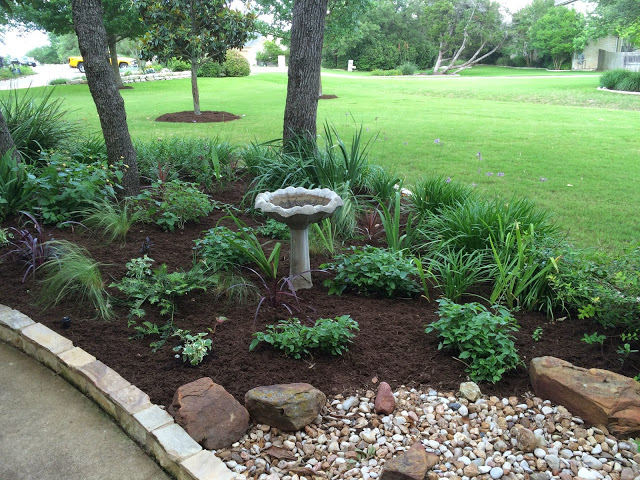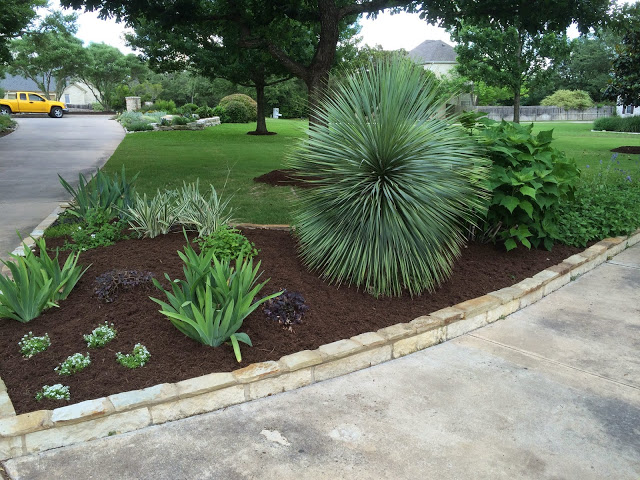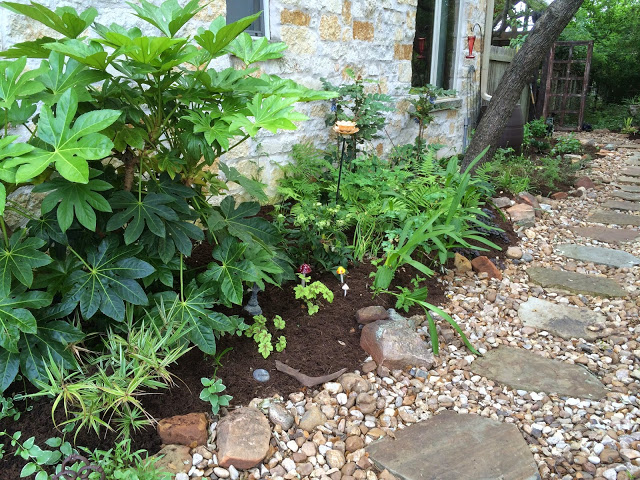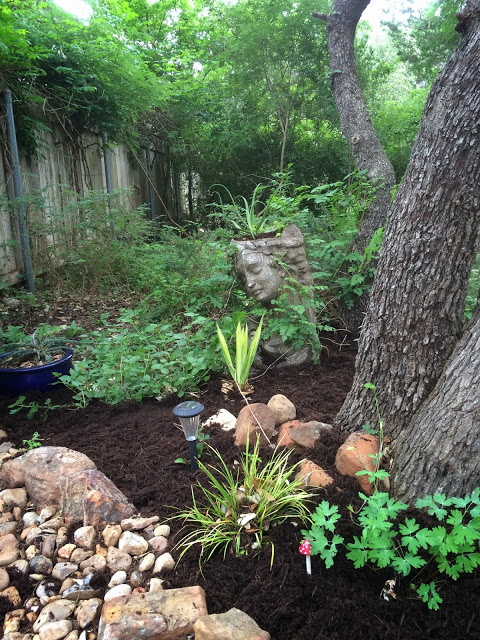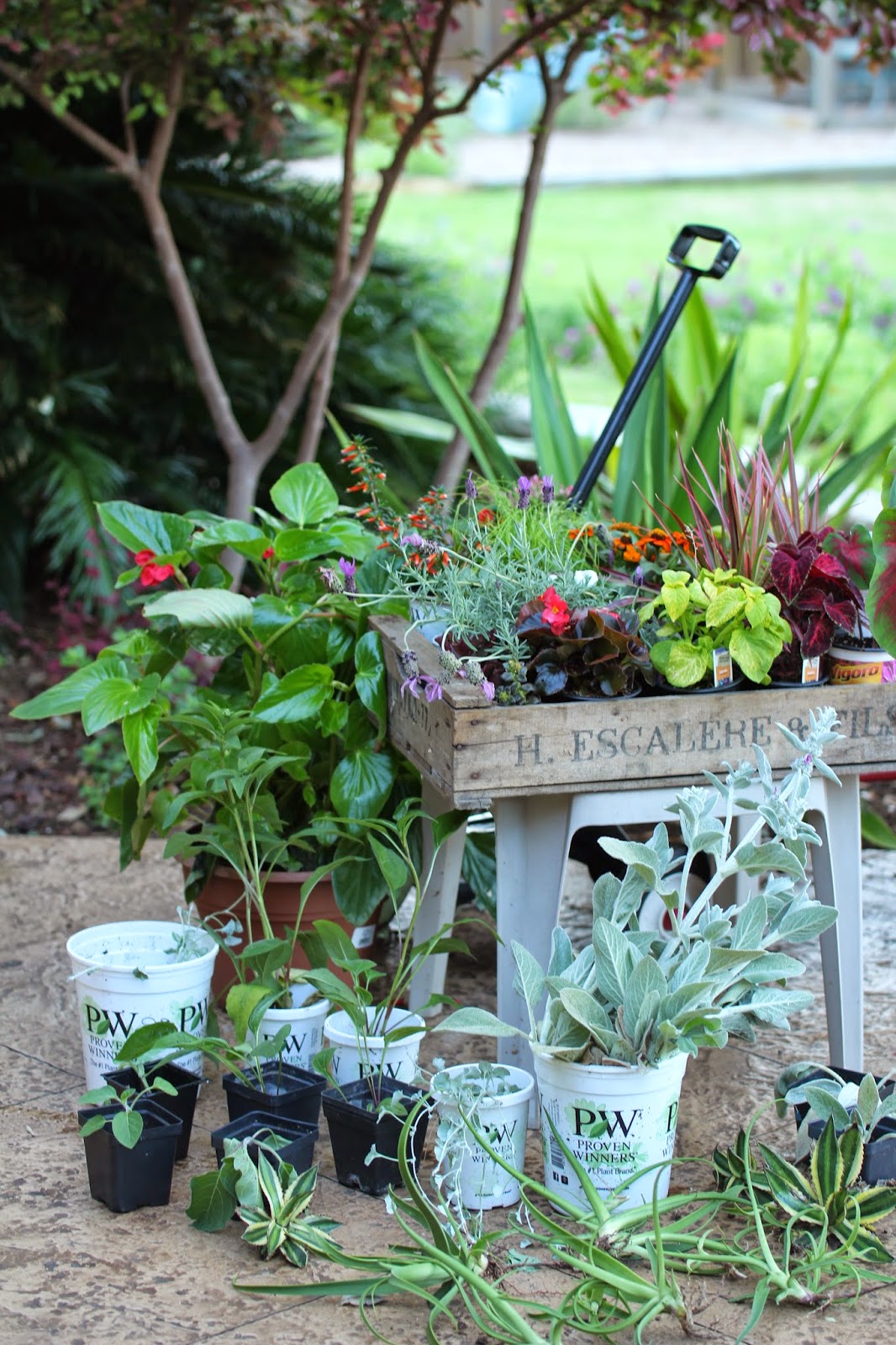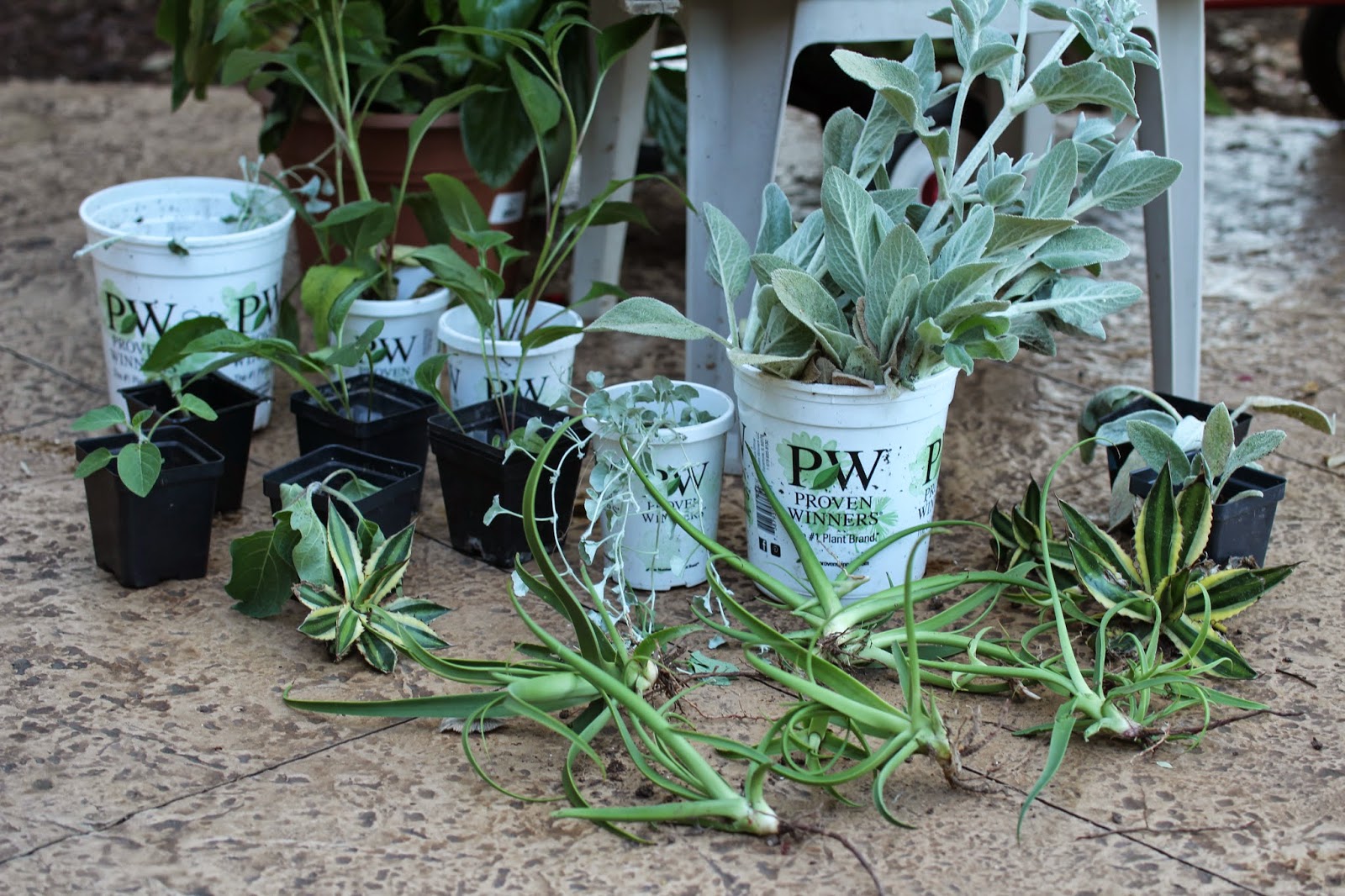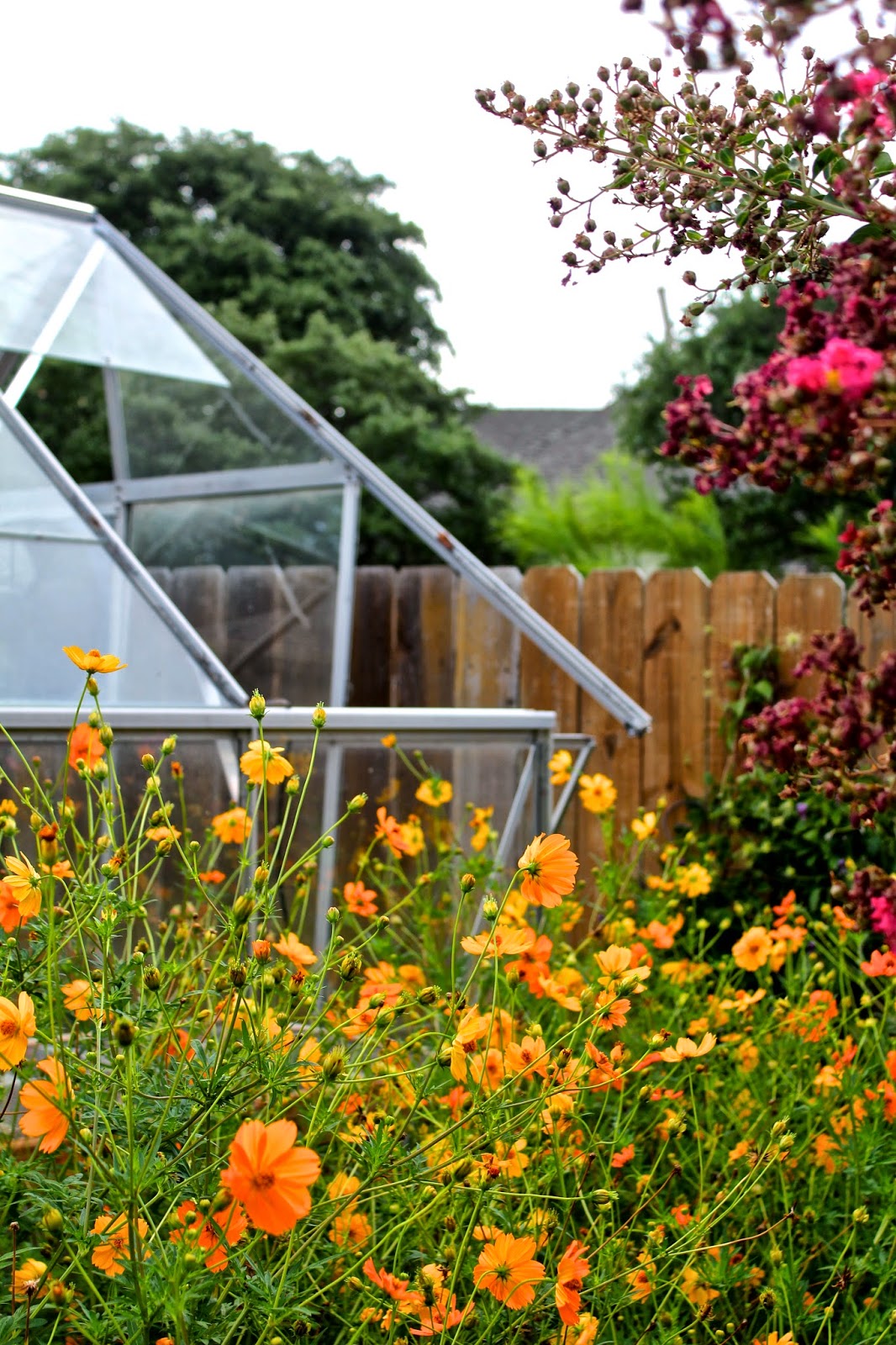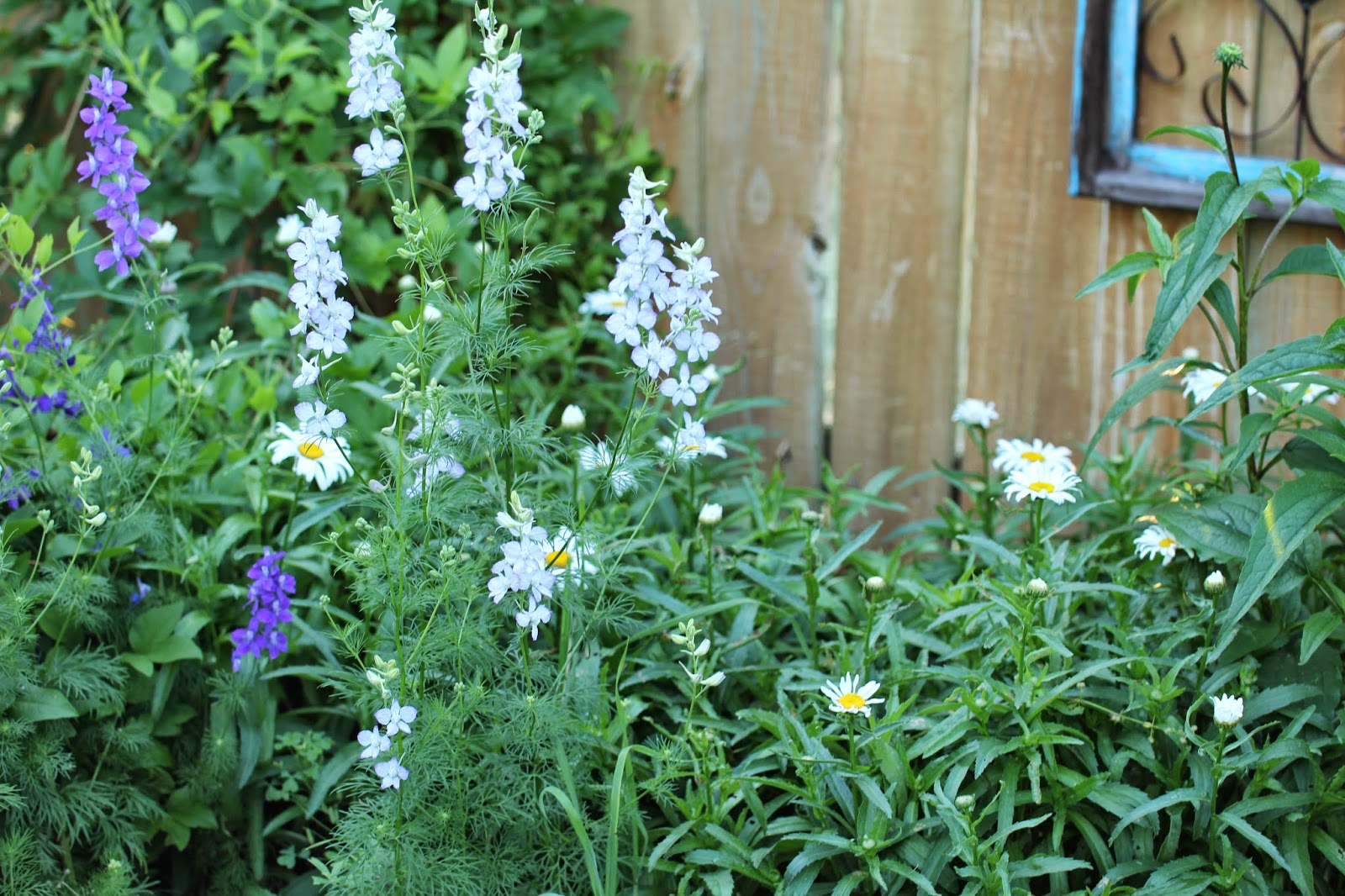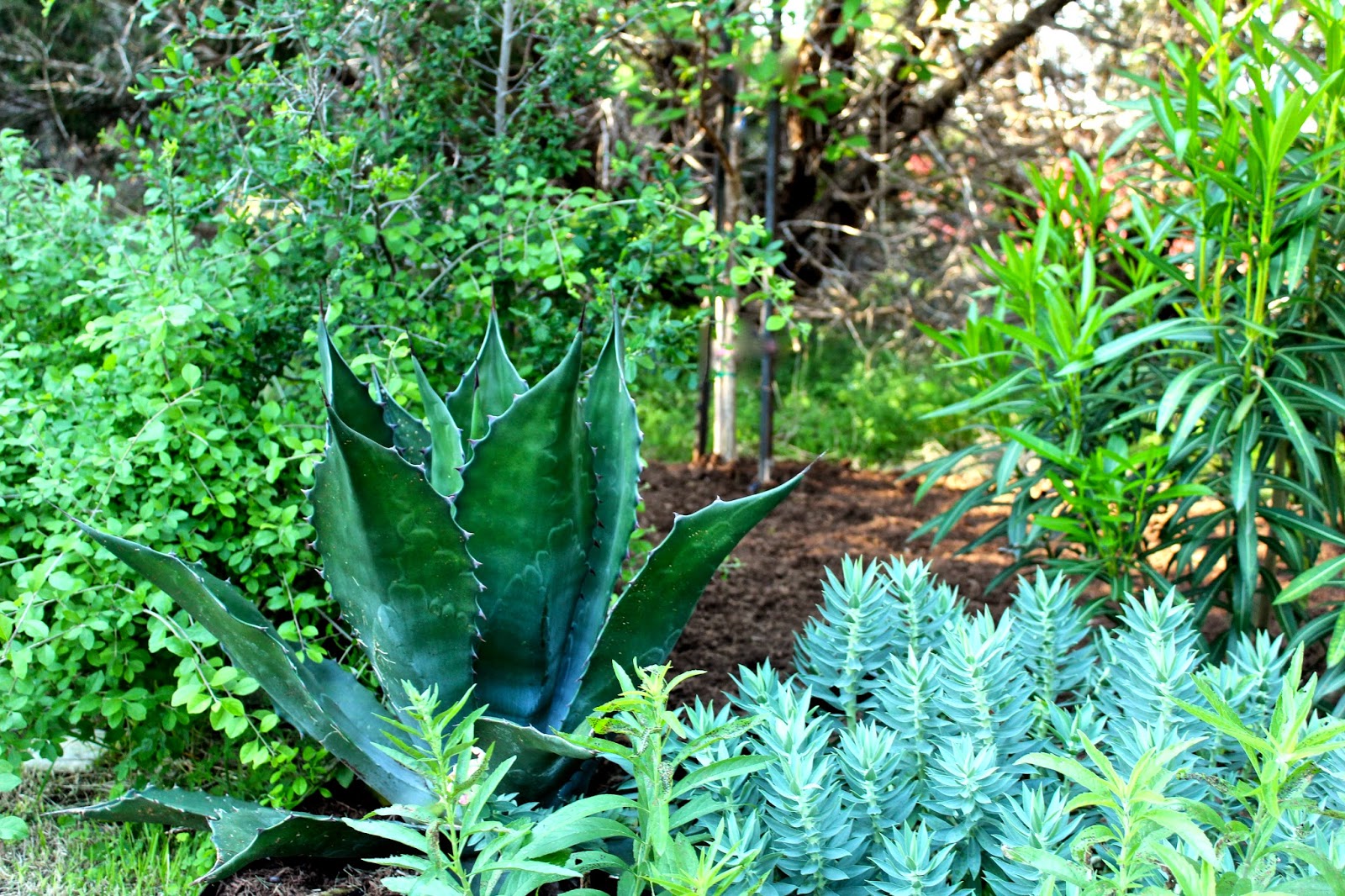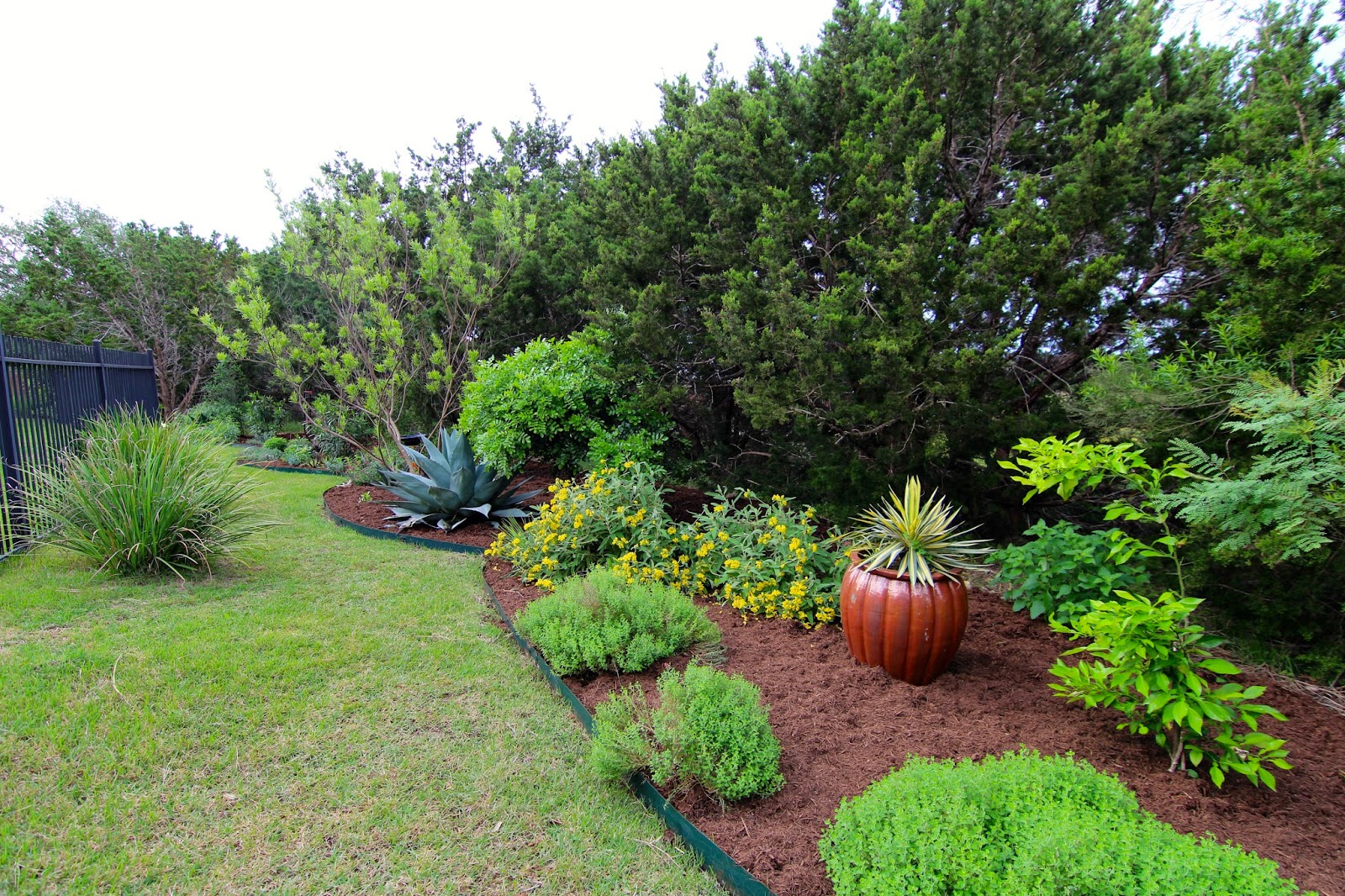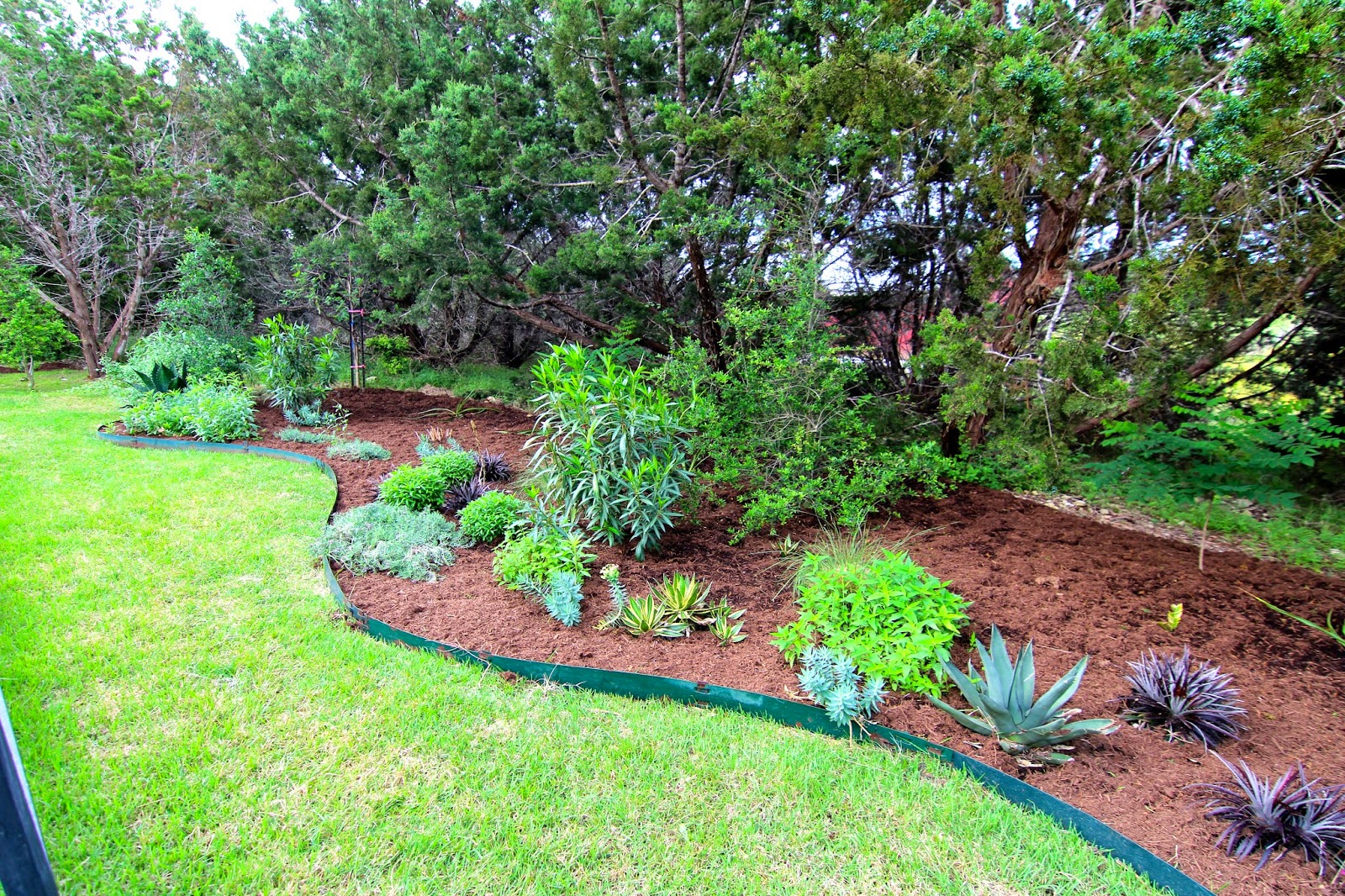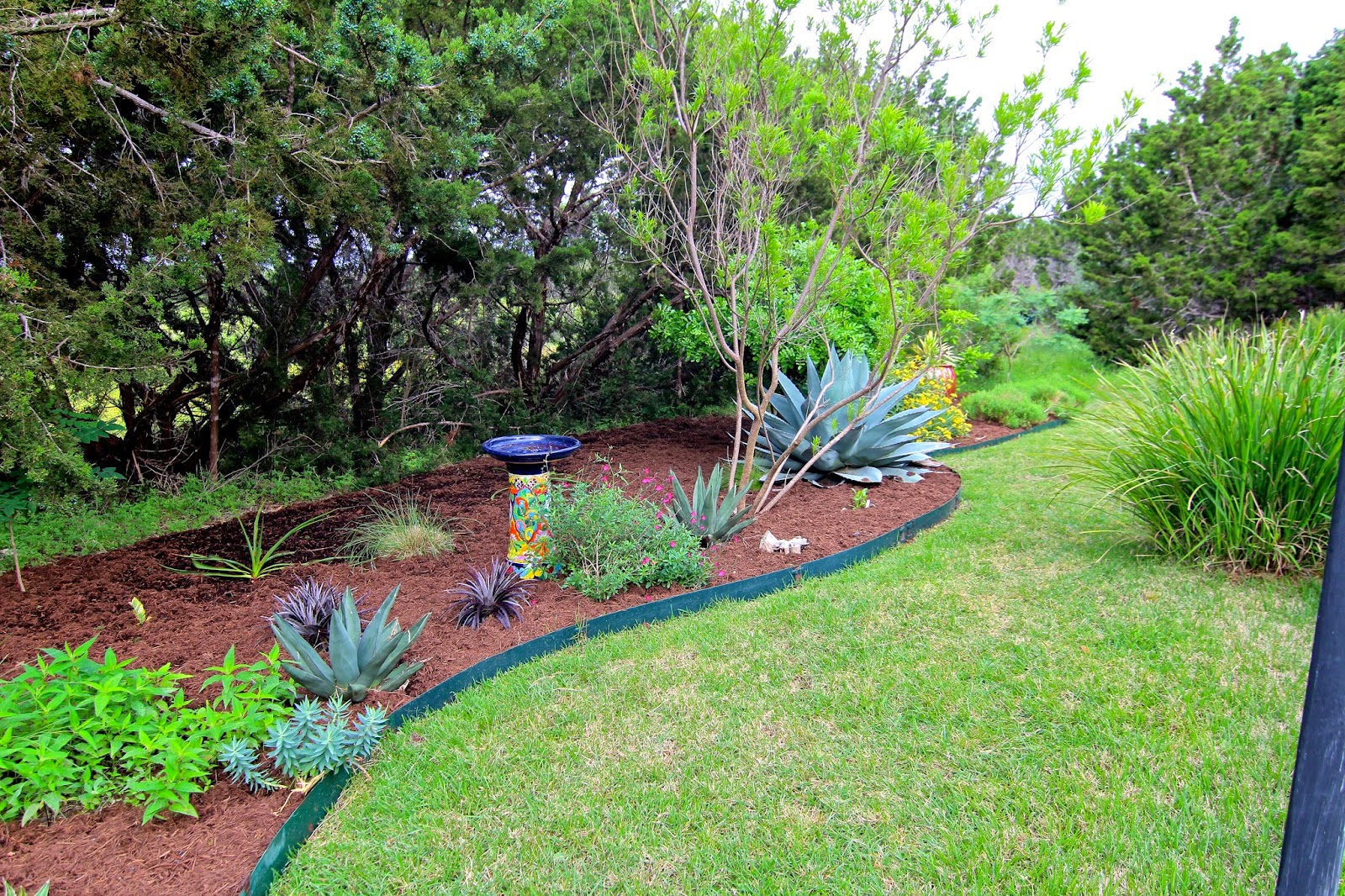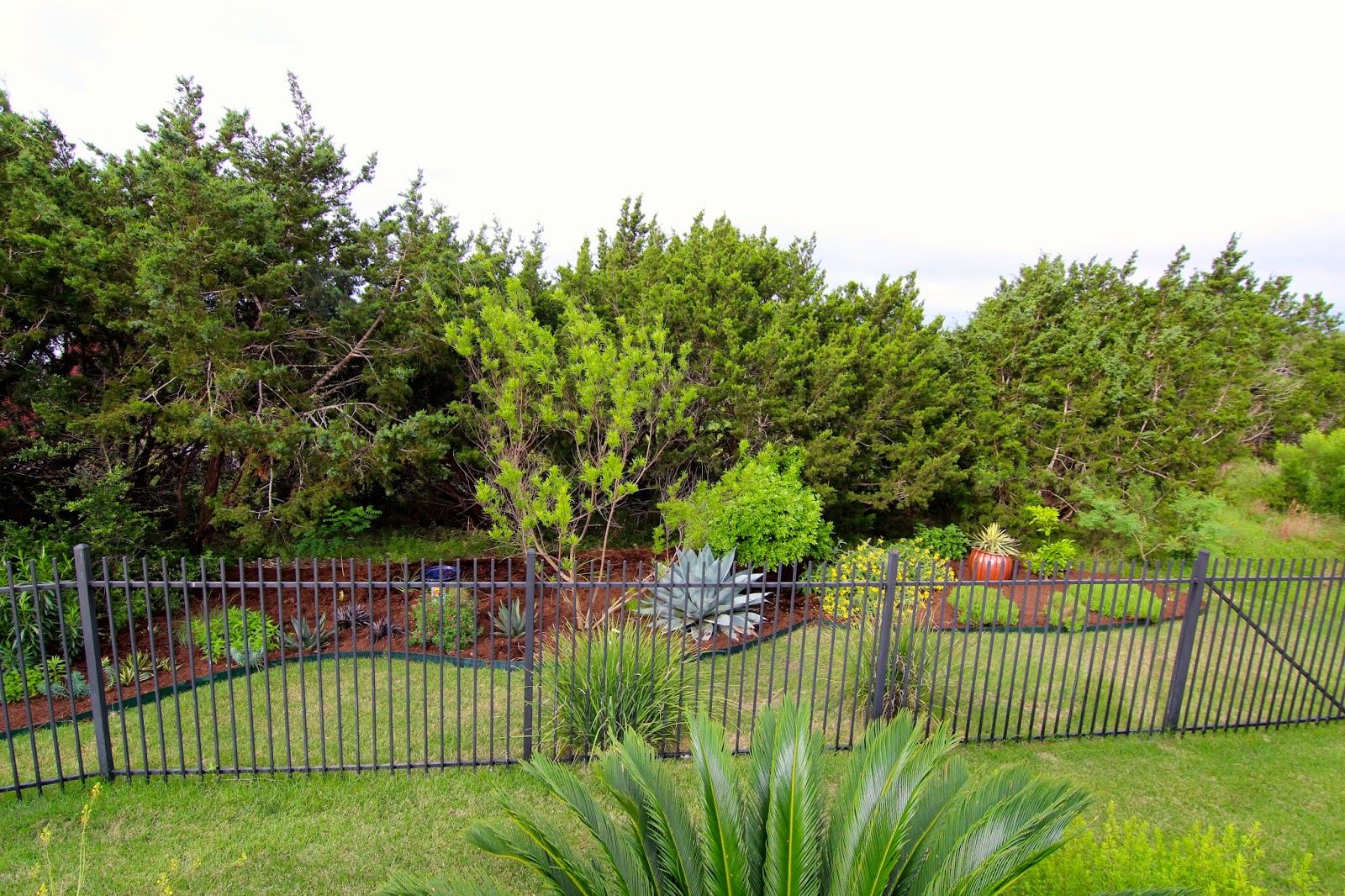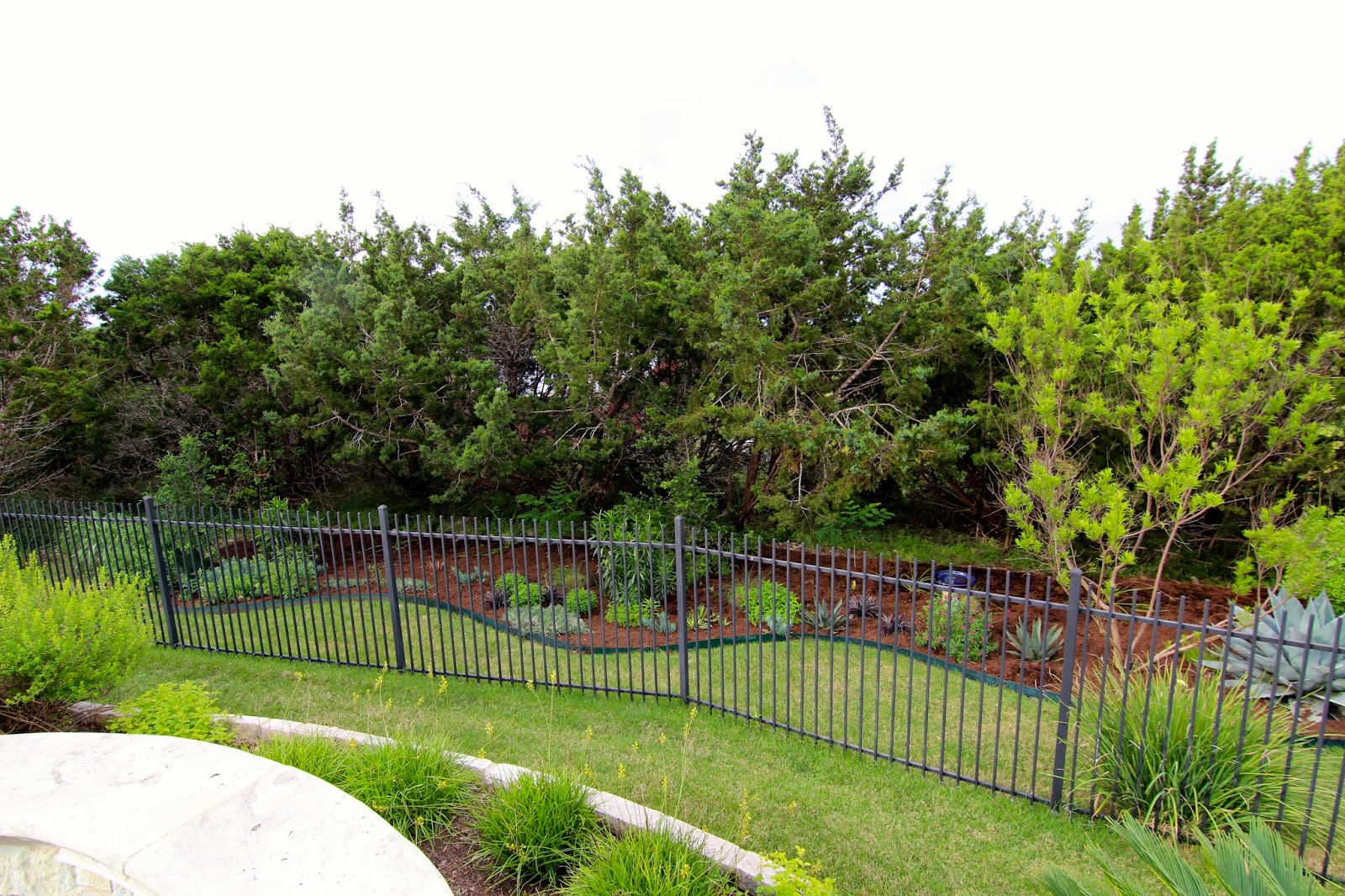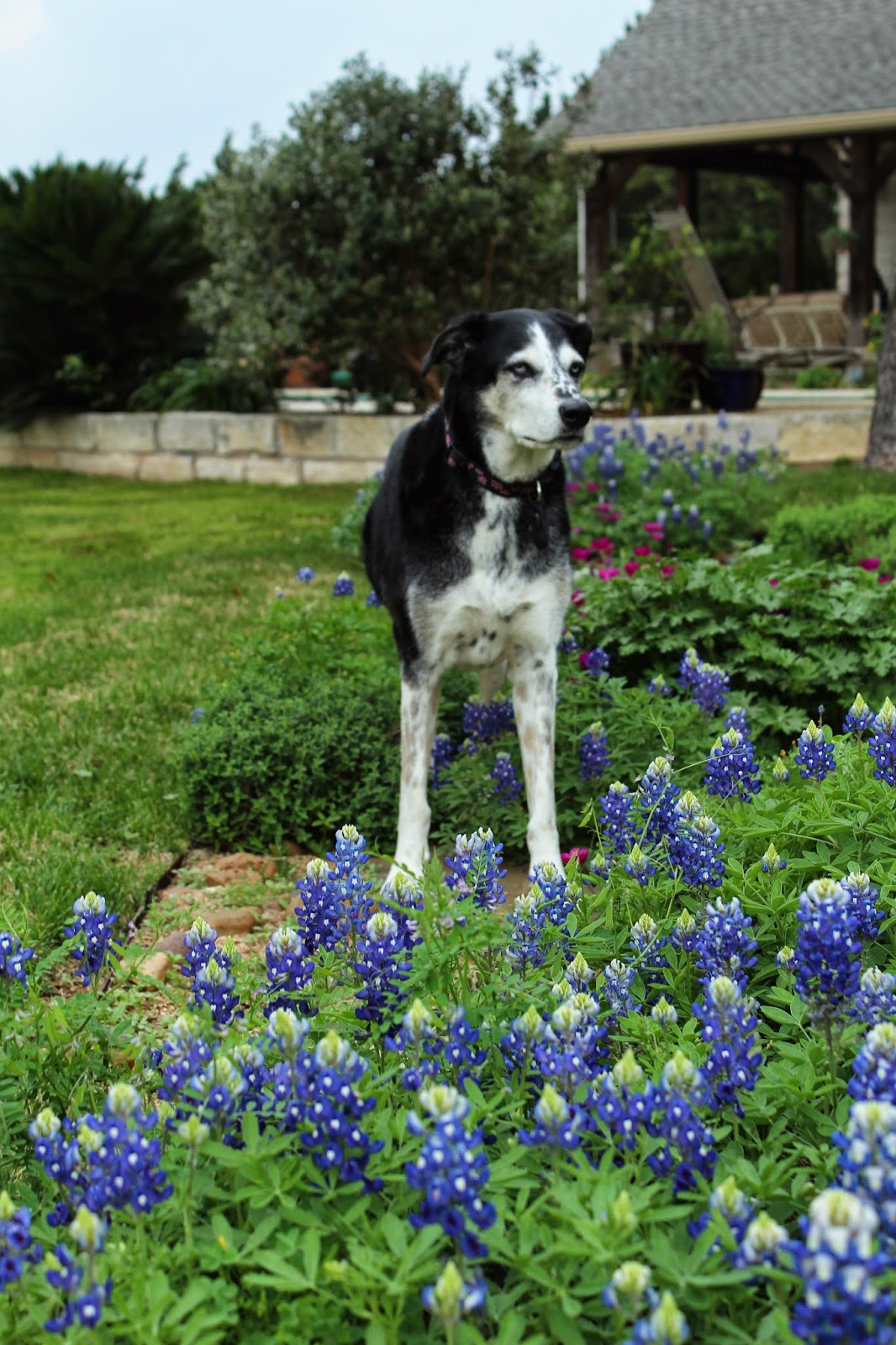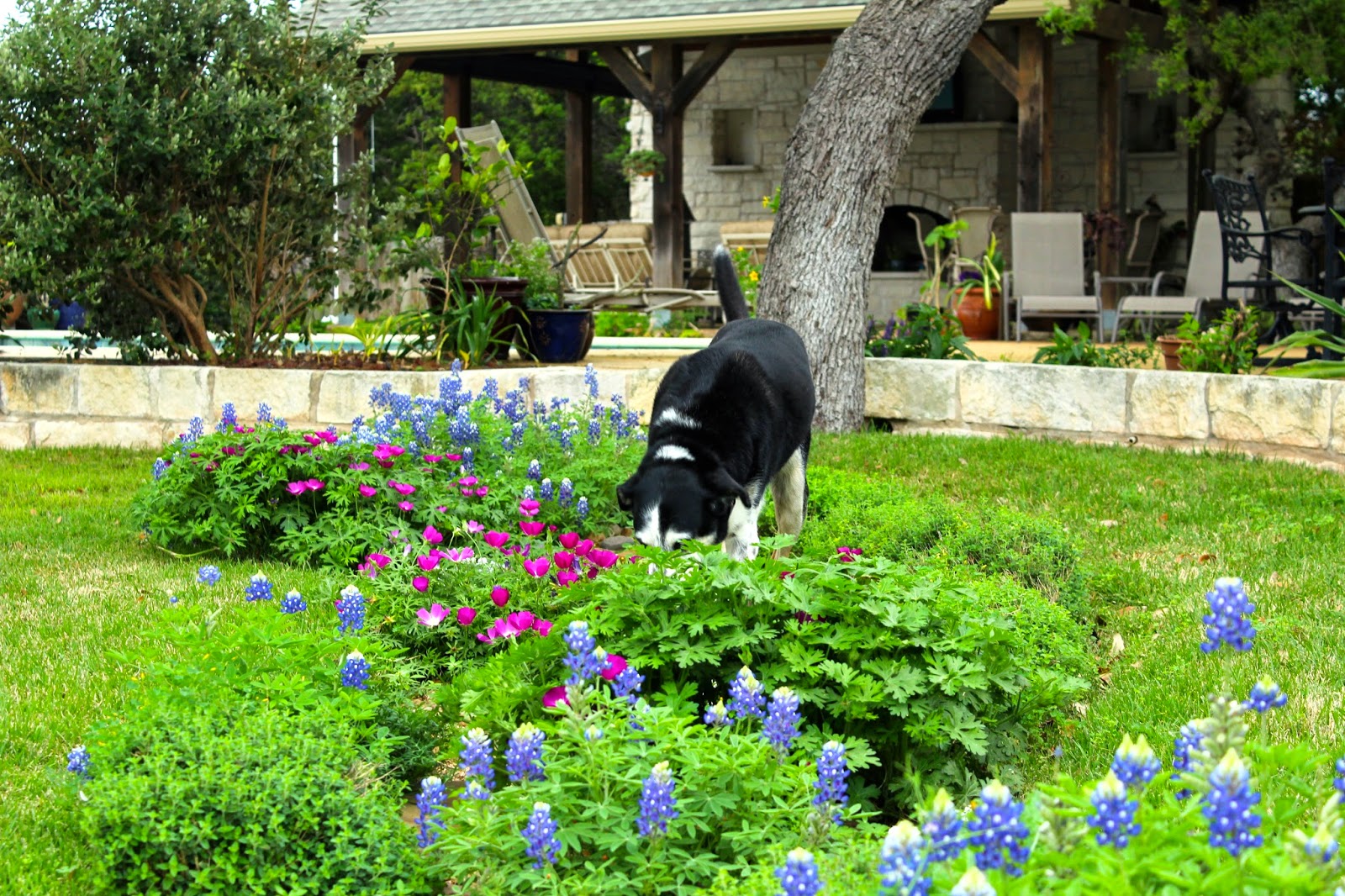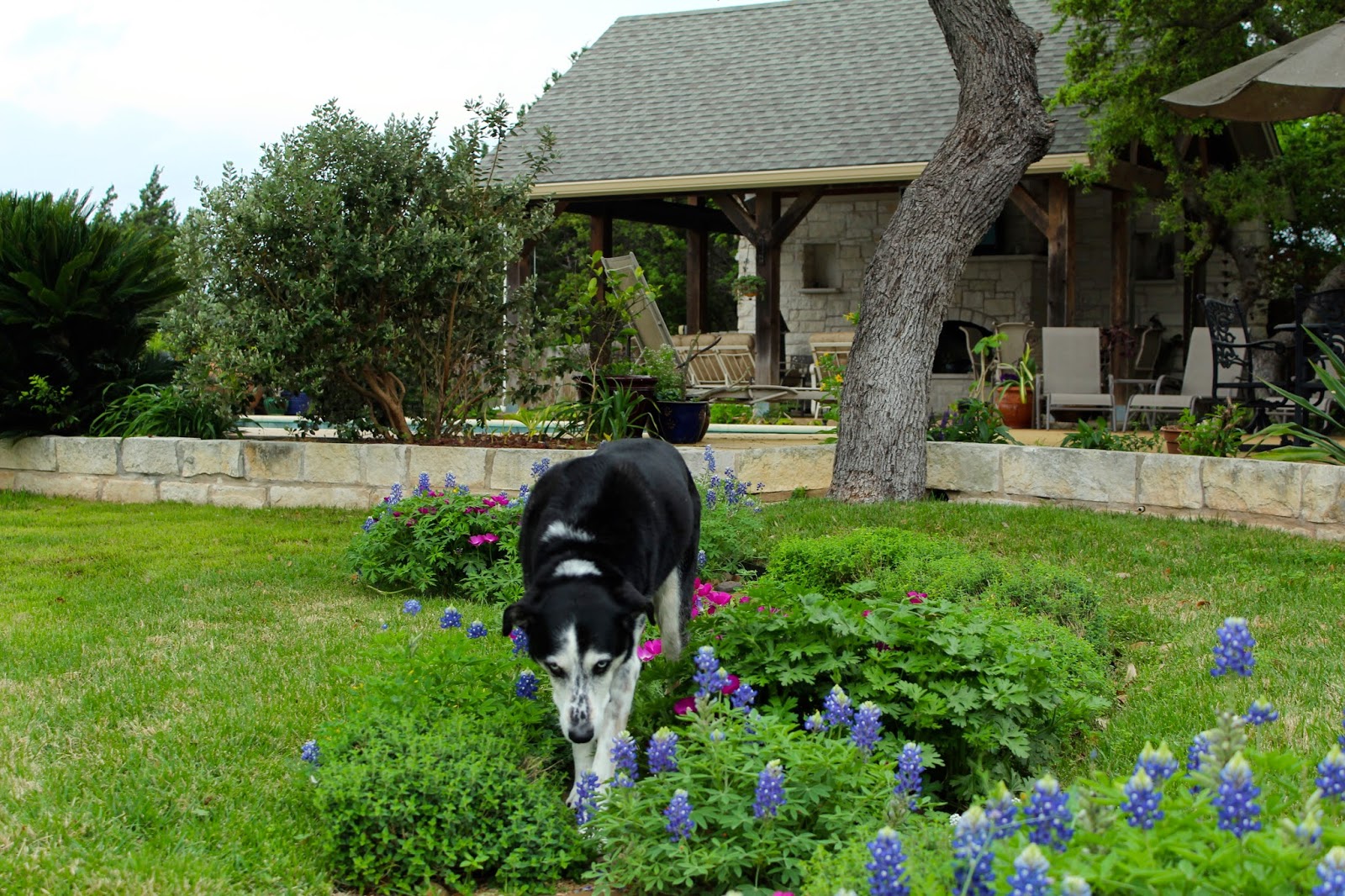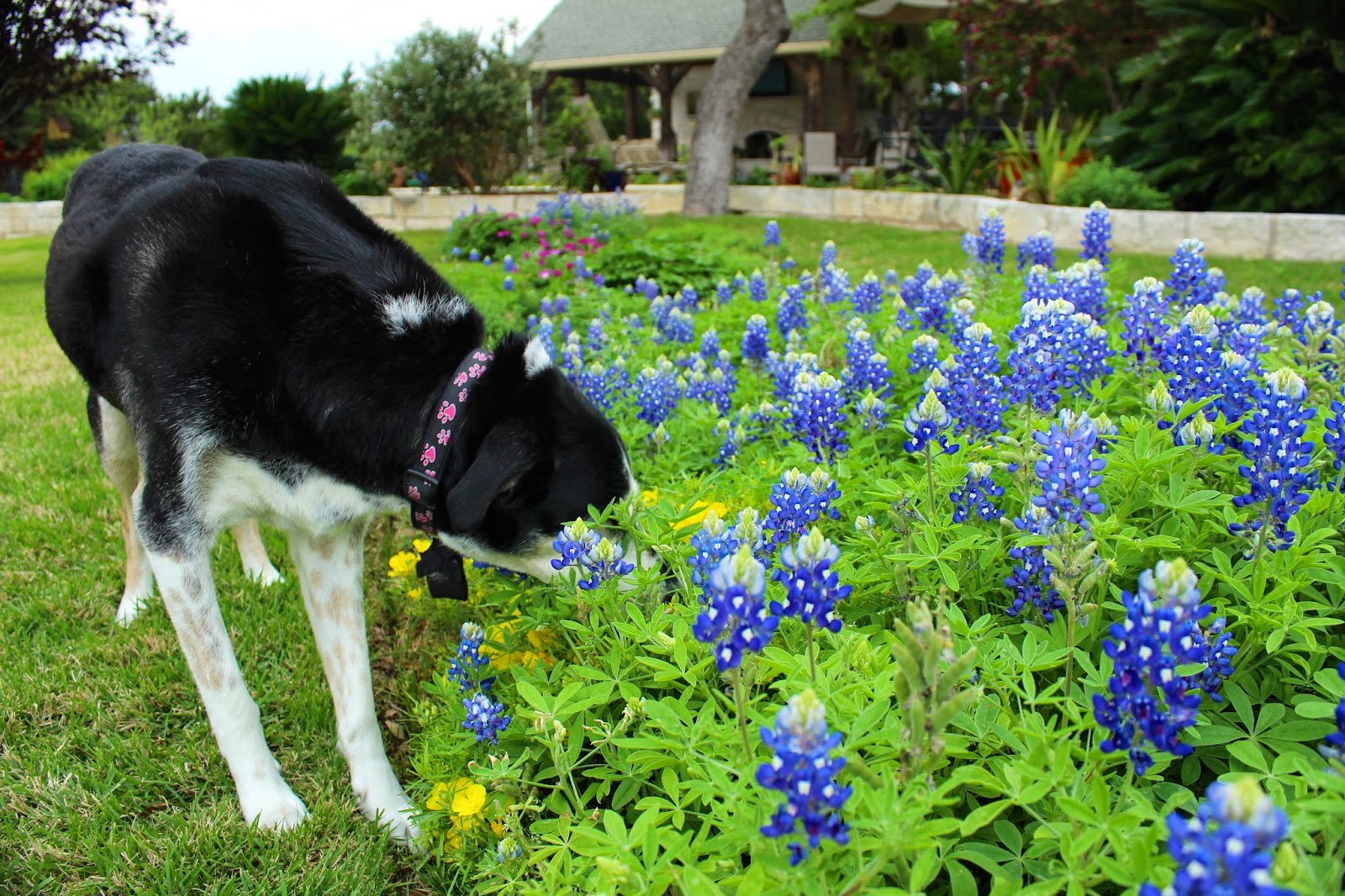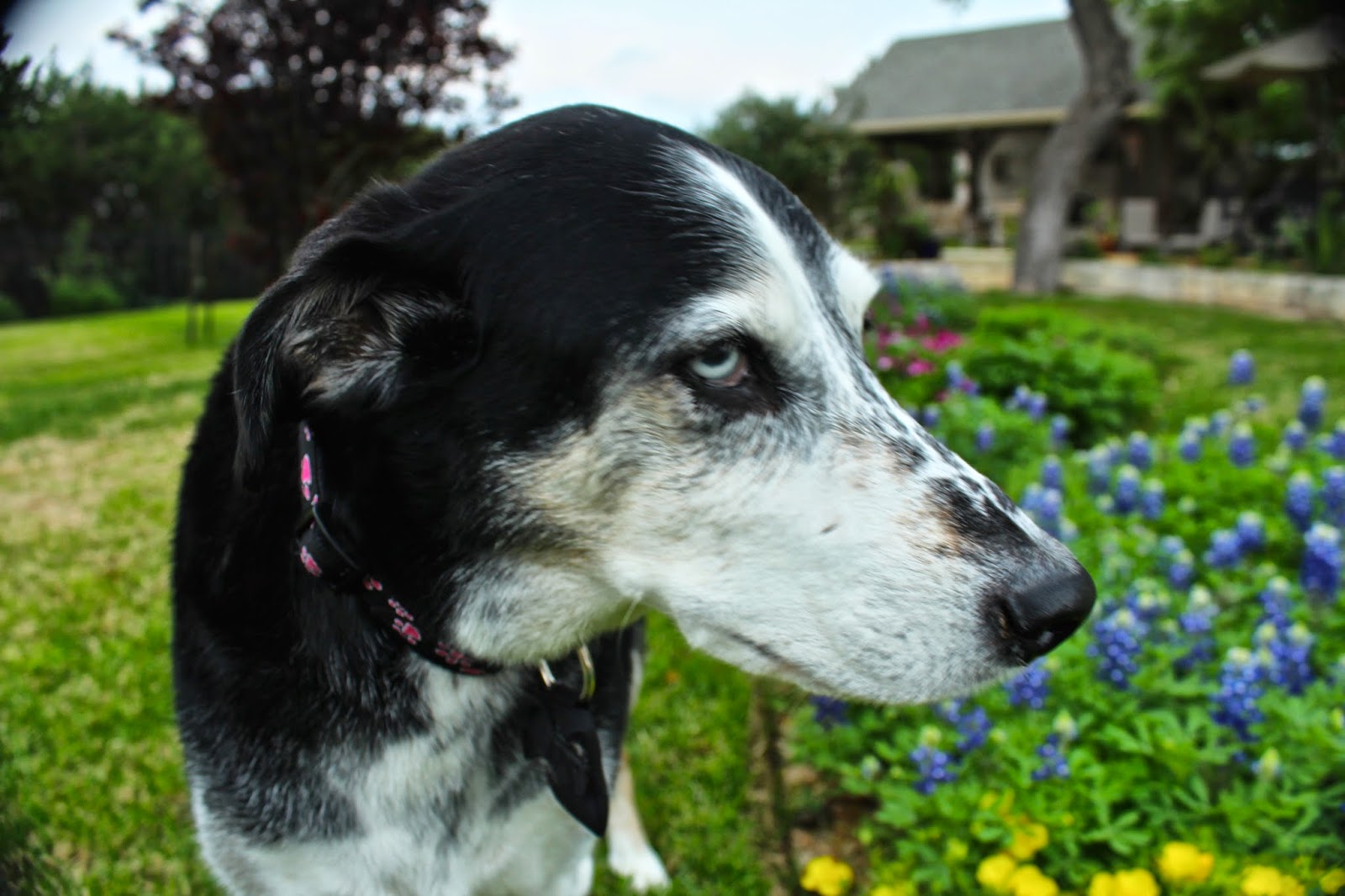Delightful garden tour on a challenging slope …
It’s a treat to get together once a month with other Austin garden bloggers to share stories, enjoy each others’ gardens, eat, drink and pass along plants at our plant swap.
On Saturday, we were treated to double the fun. In addition to our monthly gathering at the stunning garden of David and Jenny of Rock Rose, we also ventured nearby to their neighbors and were given a guided tour of another beautiful garden.
Located on approximately one and one third acre, this garden’s hills and vales are interwoven with ribbons of rock and drainage solutions that blend into the landscape.
As we walked into the back yard, I was immediately drawn to this line of dramatic whale’s tongue agaves. They sit perched atop a river rock berm, surrounded by softer foliage that draws the eye far out into the garden.
Here’s a longer shot of how they are incorporated into this first layer of the overall landscape.
A closer look at the other plants reveals a cottage-like aesthetic, complete with a bird bath, gazing ball and obelisk to serve as focal points throughout the space.
The blend of sun-loving plants crosses traditional garden style boundaries in some areas, making the garden more intriguing.
Then the path evolved into a more desert-like garden, filled with sculptural cacti and agaves and garden art.
As dry as the garden appeared, it was hard to imagine the torrential rains that must have swept through these beds only days before.
As you keep meandering through the back of the garden, you wind your way through a shadier, wooded pathway.
Just as the garden becomes sunnier again, so does the garden decor. Brilliant pops of orange and cobalt blue are sprinkled throughout this section of the landscape.
Hot garden plants fill the brightly colored planters.
A single orange slice of wall acts as a backdrop for this dramatic planter, home to either a sago palm or a dioon edule.
More beautiful tropicals.
This is a view from the garden back to the house and a covered patio area.
Another painted wall houses this creative trellis displaying an array of cacti in terra cotta pots.
Just past the driveway, this colorful rooster seems to be peering through the salvia to spy on our group of gardeners.
This chocolate mimosa makes a striking statement against this dark wooden gate the the bright limestone.
This Asian-style bench welcomes visitors as they near the front door — and just beyond — this imposing soldier seems to be guarding the entry area as well.
The garden was spectacular — I loved not only the collection of plants, but also the fascinating garden sculpting to address drainage issues.
Special thanks to the homeowners for inviting us to share in their beautiful space.

